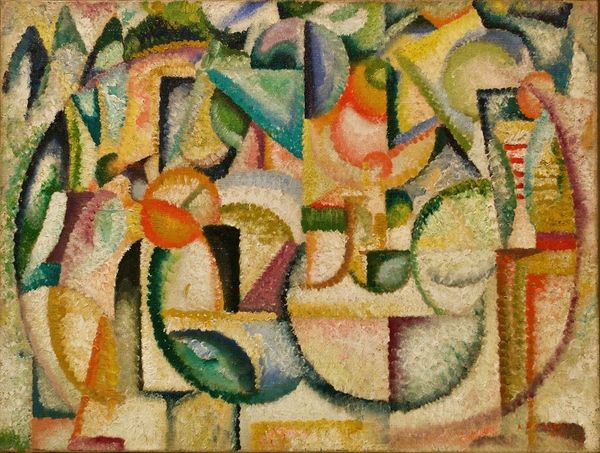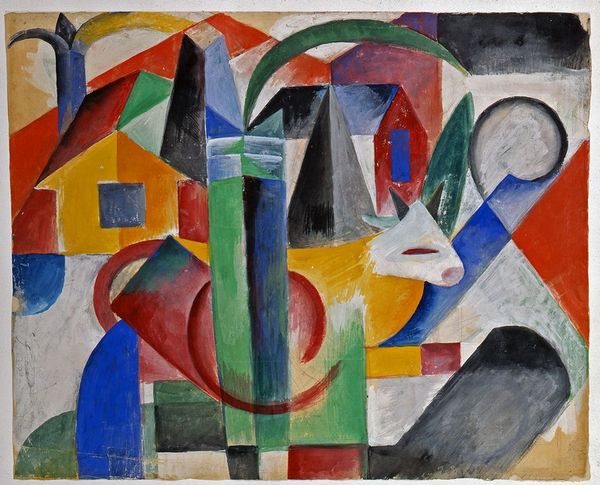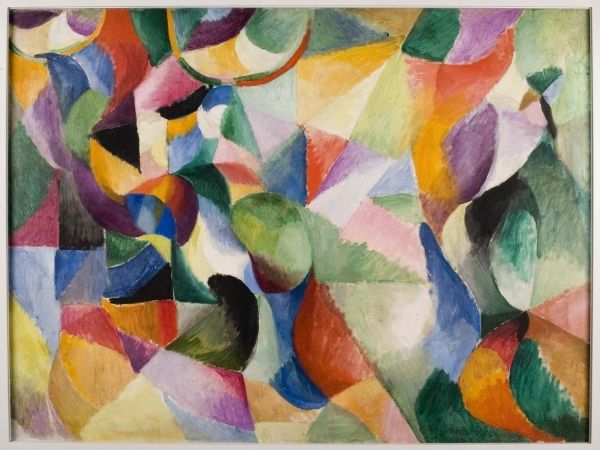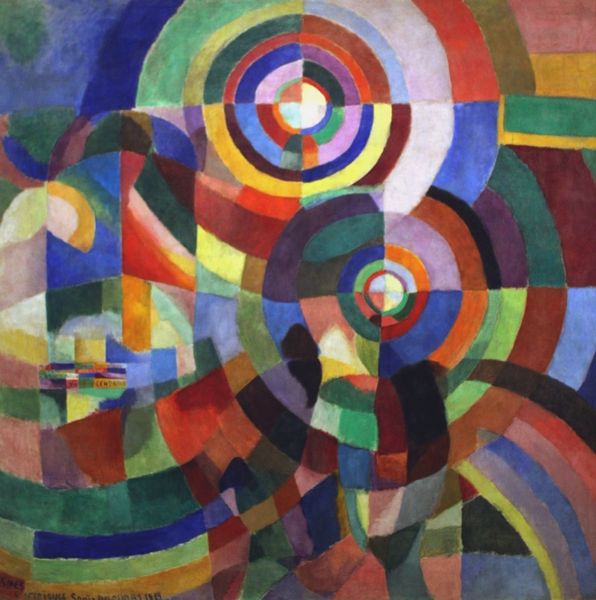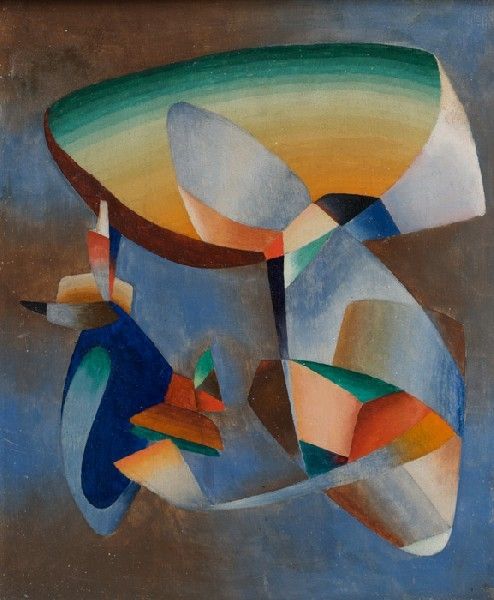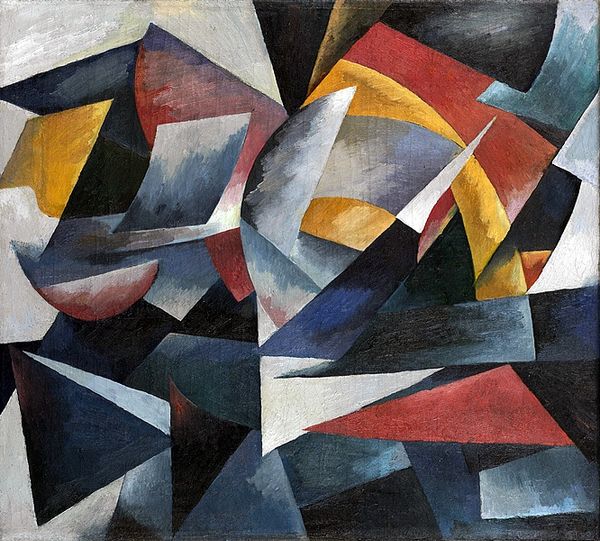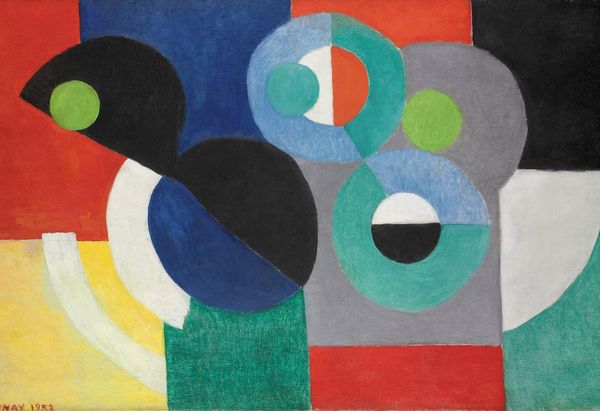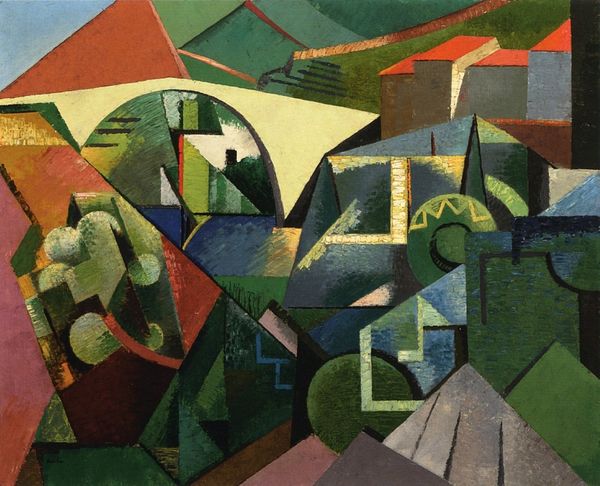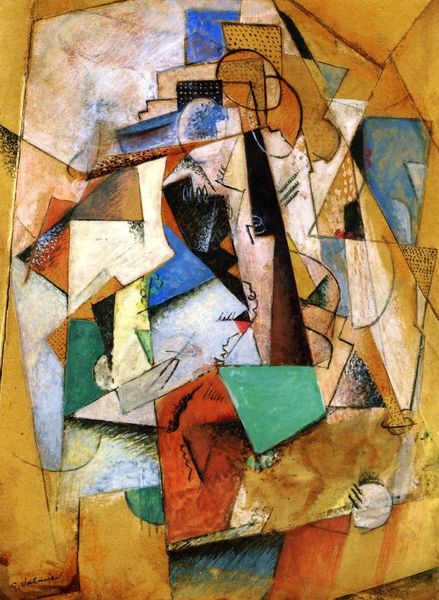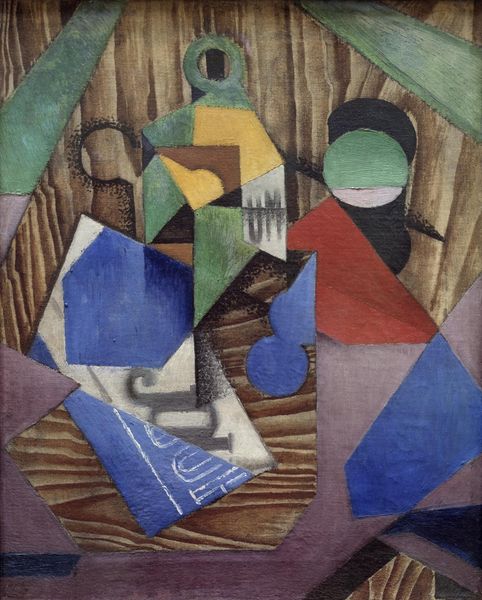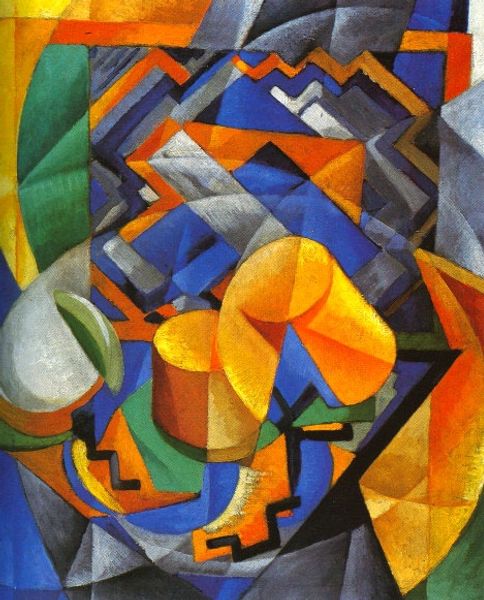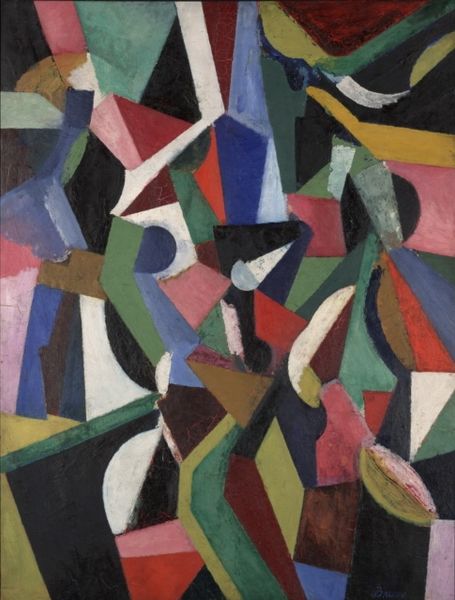
painting, oil-paint
#
cubism
#
art-nouveau
#
abstract painting
#
painting
#
oil-paint
#
painted
#
abstract
#
handmade artwork painting
#
acrylic on canvas
#
geometric
#
abstraction
#
painting art
Copyright: Public Domain: Artvee
Editor: We're looking at "Study B" by Amadeo de Souza-Cardoso, painted in 1913 using oil paints. I'm struck by its vibrant colors and the way the geometric shapes seem to both clash and harmonize at the same time. How do you interpret this work, particularly in the context of its time? Curator: Souza-Cardoso’s "Study B," is a powerful example of the avant-garde spirit transforming European art. Cubism was upending traditional representation, fracturing forms, and challenging viewers. But it's also worth considering Art Nouveau's influence on the curving, organic shapes found here, creating a fusion of styles. How do you think the public, accustomed to representational art, might have reacted to something like this in 1913? Editor: I imagine they were pretty confused, or maybe even angry! It's so different from the portraits and landscapes that were popular. Were there specific cultural or political forces influencing this move towards abstraction? Curator: Absolutely. The rise of industrialization and urbanization dramatically altered social structures and cultural values. Artists felt a need to capture a more fragmented, dynamic reality than traditional styles could offer. This artwork serves almost as a manifesto against academic conventions. Do you notice any particular symbols or shapes that you think are significant? Editor: I keep coming back to the intersecting circles; it feels like they're trying to connect different elements of the composition, maybe symbolizing a search for unity in a rapidly changing world. Curator: That’s an astute observation. Souza-Cardoso aimed to express emotional and intellectual states through abstract forms, reflecting a broader search to define modern consciousness. This pushed painting’s social role as well – rather than simply depicting the world, it aimed to interpret and shape it. Editor: I never really considered how social forces directly affect what artists create. Thanks for shedding some light on this artwork. Curator: And thank you for making keen observations of the art, making connections and raising important points. It's precisely those critical dialogues that invigorate the ongoing discourse around the artwork, especially given its era's complexities.
Comments
No comments
Be the first to comment and join the conversation on the ultimate creative platform.
